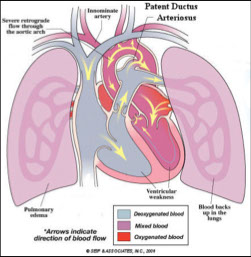Death in Pediatric Population
Anal sphinter Dilation
Normal finding due to relaxation of sphincters
Trauma/abuse may be suspected if there are radiating perianal lacerations, or evidence of a STD
t

Patent Ductus Arteriosus
Septal Defects
Ostium secundum atrial septal defect. This is the most common atrial septal defect, affecting over two-thirds of people with atrial septal defects. It is caused when a part of the atrial septum fails to close completely while the heart is developing. This causes an opening to develop in the center of the wall separating the two atria.
Ostium primum atrial septal defect. This defect is part of atrioventricular canal defects, and is associated with a split (cleft) in one of the leaflets of the mitral valve.
Sinus venosus atrial septal defect. This defect occurs at the superior vena cava and right atrium junction, in the area where the right pulmonary veins enter the heart. As a result, the drainage of one or more of the pulmonary veins may be abnormal in that the pulmonary veins drain to the right atrium, rather than the left atrium.
Coronary sinus atrial septal defect. This defect is located within the wall of the coronary sinus, where it passes behind the left atrium. The coronary sinus carries the blood flow from the heart's own vein, into the right atrium. It is the rarest of all atrial septal defects.

Mongolian Spots
Completely benign, but must differentiate from abuse
The blue color is caused by dermal melanocytes
Most common location: lumbosacral area or buttocks, but can be located almost anywhere on the body

Brown fat in baby

